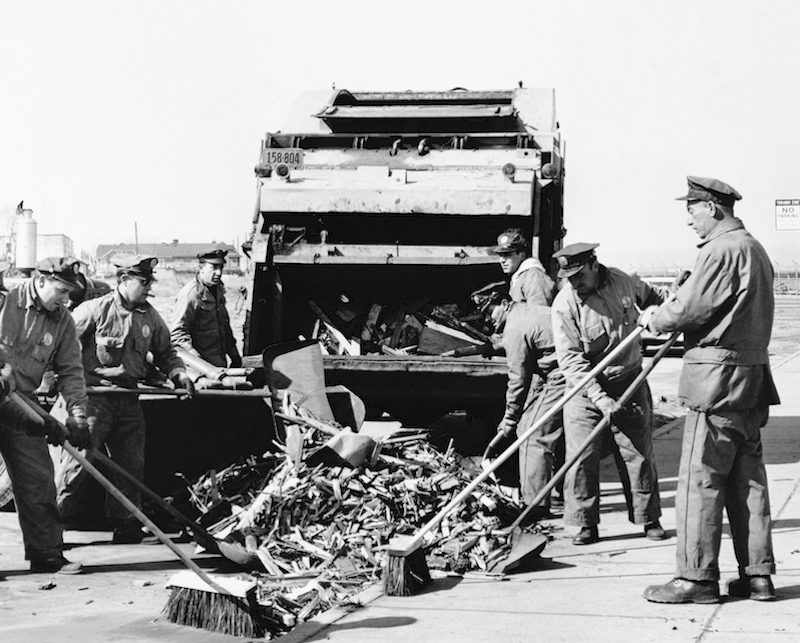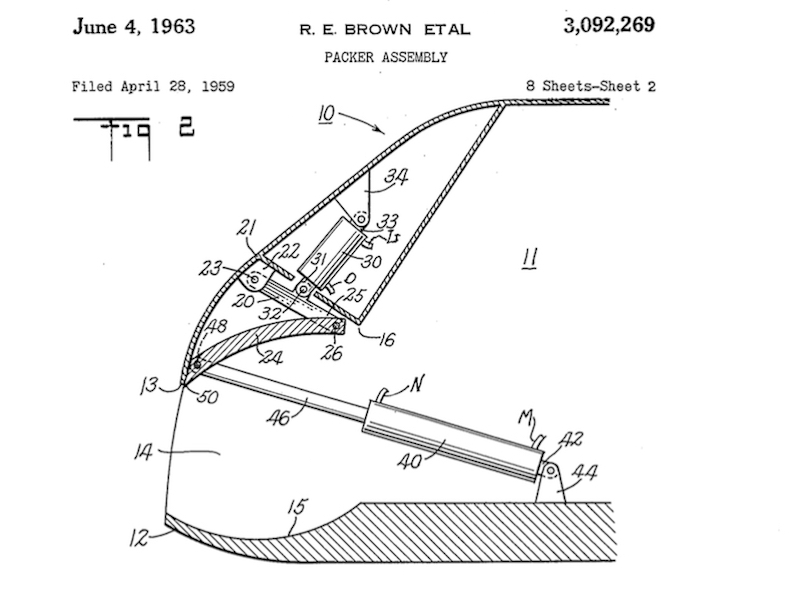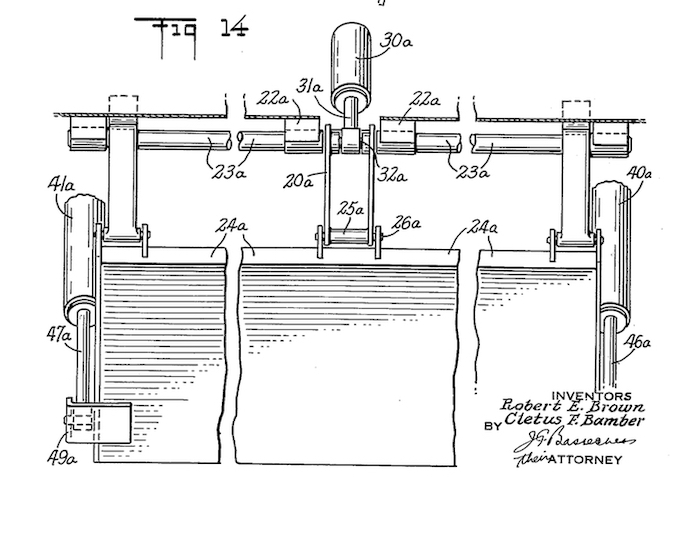|
However, a photograph has recently surfaced which shows New York Department of Sanitation (DSNY) employees loading what appears a packer very much like the one described in the 1959 Brown & Bamber patent. The photo, shown below, was taken at Coney Island in 1962, and offers only a rear view of the truck, with its fairly well-battered packer blade. Regardless of the poor view angle, this photo reveals important clues that strongly suggest this is indeed a real-life version of the patent packer. 
-What appears to be a mounting gusset for one of the packer rams (visible at left, above the blade edge) -Twin hydraulic hoses (supply and return) passing through the roof of the tailgate, which would have operated the packer lift link cylinder. -An open "access hatch" atop the tailgate, and rounded corners reminiscent of similar features common to the standard Roto-Pac COMPARISON WITH THE BROWN & BAMBER PATENT 
The patent makes no reference to how the tailgate was opened and the load ejected. Most likely, it was a tilt-to-dump just like the standard Roto-Pac was throughout its existence. The problem of opening the tailgate away from the body (with the long packing cylinders mounted inside) could be easily overcome. This would simply involve providing a locking means for the packing blade (24) to prevent if from moving rearward, such as a spring-loaded clevis pin arrangement. Thus locked in the inward position, the extension of the packing rams (40) could be used to push open the tailgate on a hinge. A piano-type hinge is visible on the truck in the Coney Island photo. Also, Gar Wood patented just such a blade-locking method on their Load-Packer 600 series. The fact that is the DSNY using this truck is further anecdotal evidence to support identification. The Department was City Tank's biggest customer, a relationship that didn't change even after the company relocated from the New York City area to Virginia in 1960. The DSNY has a long history of trying out all types of refuse equipment, and even designed its own bodies in 1938. If City Tank wanted to test a new model, New York would have been the most likely location. Finally, the Coney Island truck does not match any other known refuse packer of that era. Although conclusive evidence has not been found, I believe the Coney Island truck is indeed the City Tank patent of Brown & Bamber, and was most likely a one-off experimental unit, or was in very limited production (possibly exclusive to the DSNY). The Department is known to have kept accurate records of the number of vehicles it has owned, as well as the composition of the fleet. Perhaps the DSNY archives will one day confirm the identification once and for all. 
Rear view of the patent packer blade. Except for cylinder placement, a similar method was used on the Gar Wood T-100 in 1965.
2/9/19 © 2019 All Rights Reserved Photos from factory brochures/advertisements except as noted Logos shown are the trademarks of respective manufacturers |